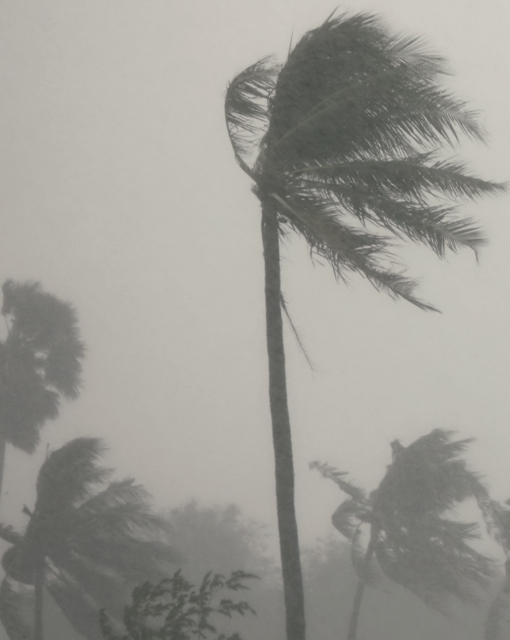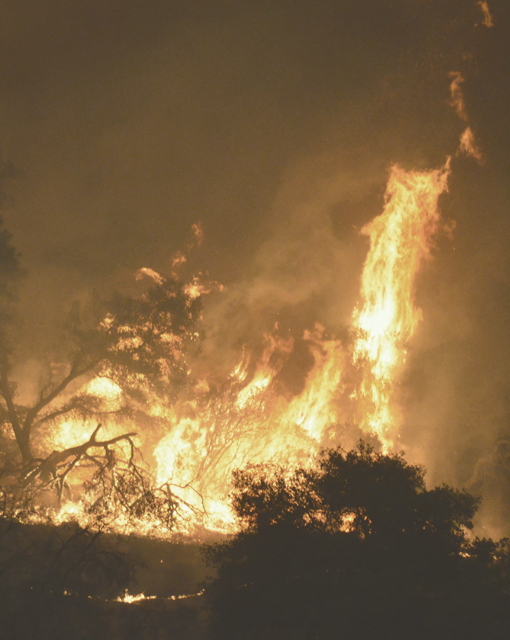Resilience in the Face of Disasters & COVID-19
The COVID-19 pandemic has prompted us all to find new ways of adaptation for so many different facets of life, work, health, and community. The necessary resolve we must employ in the face of the pandemic raises more complex questions when planning for natural disasters and other climate phenomena, all of which have their own challenges to safety, well-being, and community infrastructure. Adapting our responses to hurricanes and wildfires during pandemic conditions requires staying diligently informed and strategically considering new approaches to preparation and planning.
Hurricanes & Tropical Storms

The National Oceanic and Atmospheric Association (NOAA) recently released its forecast for this year’s hurricane season, which spans from June 1st to November 30th. A busy season has been predicted:
- 13-19 named storms (An average season has 12)
- 6-10 predicted to become hurricanes
- 3-6 predicted to become major hurricanes
The Atlantic has already experienced nine named storm systems to date, two of which formed in May before the season officially started. The first named hurricane, Hanna, touched down earlier this week in Texas as a Category 1 hurricane. NOAA’s outlook for the Central and Eastern Pacific is for a near normal or below normal season.
While this forecast is for activity rather than landfall, a potentially busy Atlantic hurricane season coinciding with the ongoing COVID-19 pandemic highlights the many complex scenarios that must be considered when planning for resilience and disaster preparedness. Unanticipated external factors such as a virus can impact a plan’s effectiveness to varying degrees, and the question of how to minimize viral spread while evacuating communities from a disaster is at the forefront of many people’s minds this season. A storm coinciding with a spike in COVID-19 cases in that area further heightens the risk to safety and well-being.
Post-disaster responses may need to consider how to reduce viral spread while trying to determine how best to allocate limited funding and resources to repairing or replacing vital infrastructure. In a volatile economy where funding sources may be reduced or slashed, identifying, protecting, and restoring critical links and infrastructure becomes ever more important to get communities back on their feet quicker.
At Fehr & Peers, our planners are actively helping develop prioritization frameworks that incorporate these risks and concerns into a funding strategy, enabling jurisdictions to tackle the infrastructure issues that are most at risk and most important for maintaining access to jobs and opportunity once the storm passes. While individual hurricanes develop in a matter of weeks or days, the approach to long-term planning around our transportation networks to ensure they can withstand recurring seasonal risks should be a key focus for emergency managers and transportation planners.
Wildfires
The past couple months have already seen strategies being implemented for firefighting efforts in response to COVID-19. Agencies are assessing how to minimize contact and develop protocols for wildfire response in areas with known COVID-19 exposures. The National Interagency Fire Center (NIFC) has developed wildfire response plans incorporating guidance on COVID-19 for nine different geographic areas, recognizing the need to reduce transmission between fire personnel to ensure adequate wildfire response, as loss of individuals could severely affect a wildfire response in addition to the health concerns.
Parts of Arizona and the southwest were suffering from large wildfires in advance of the North American monsoon season, and the NIFC has issued an above normal outlook for wildfires for many parts of the Western United States this summer and into the fall. Above normal wildfire activity is predicted for the Pacific Northwest, Great Basin, and Northern California as the summer progresses. Above normal activity is also expected in Hawaii, with warmer and drier conditions predicted from July to October and many locations across the state already experiencing drought conditions. Activity is expected to be near or below normal for Alaska and the eastern and southern states.
While above normal activity is predicted for much of the western part of the country, some strategies for mitigating wildfires have been cut back or altered as the economic impacts and health risks of COVID-19 have become clearer. The California League of Cities reported that Governor Gavin Newsom’s May revision budget eliminates $101.8 million in funding that was proposed for implementing AB 38, which would fund a home hardening pilot program (though the FY 20-21 budget does maintain funding for other wildfire efforts). As a part of its risk-informed approach to managing prescribed fires, the USDA Forest Service has stated that it is considering the impacts of smoke on communities affected by COVID-19 and the availability of local resources to reduce interstate travel.
With a greater risk of reduced wildfire response occurring in tandem with increasingly dry conditions, it has never been more important to understand how to safely evacuate residents and what infrastructure is critical to help affected communities rebuild. The United States Center for Disease Control (CDC) has released its Interim Guidance for General Population Disaster Shelters During the COVID-19 Pandemic, with key recommendations, including the following: smaller shelter sizes, monitoring and testing of COVID-19 for shelter workers and residents, face masks, and alternatives to shelters, such as sheltering in place.
Fehr & Peers partners with clients to help evaluate wildfire evacuation routes, access routes to shelters, and goods movement considerations needed to support a shelter-in-place policy. Our operational network analyses – in combination with our understanding of the mobility limitations, supply chain issues, car ownership rates, and reliance on public transit – inform the approach to preparing for short-term evacuations or shelter-in-place policies.

Be it a wildfire, hurricane, or other disaster, balancing the disaster risk with the risks and implications of COVID-19 will be critical to successful planning during the pandemic. Our climate change experts are listening to needs, adapting to new strategies, and helping clients and communities weather the storms. Contact us today to join the conversation.

